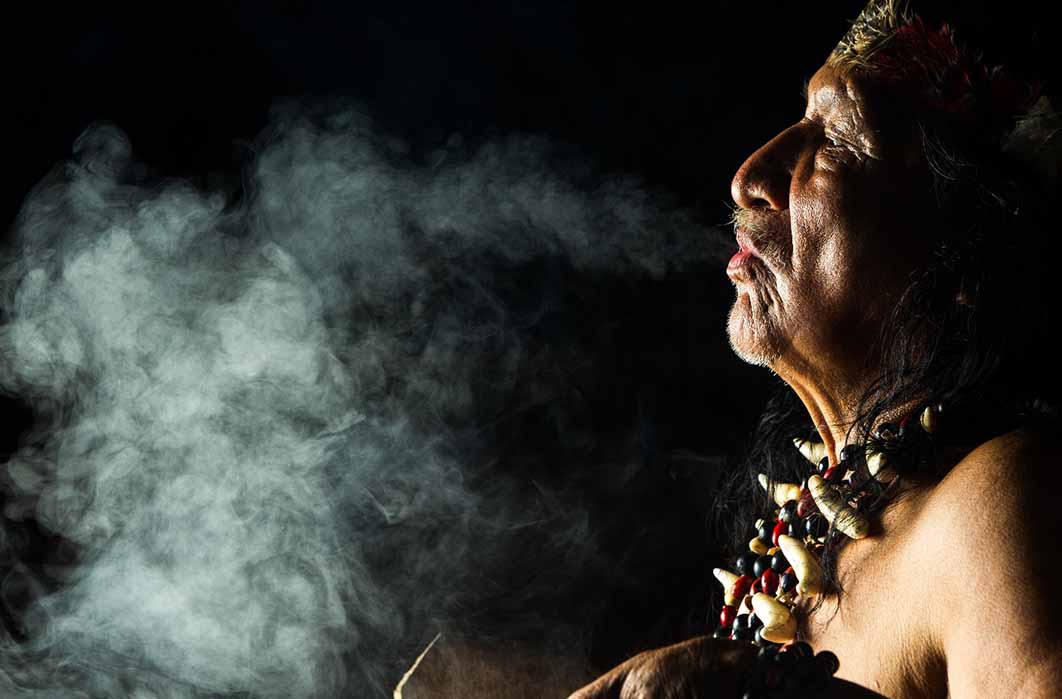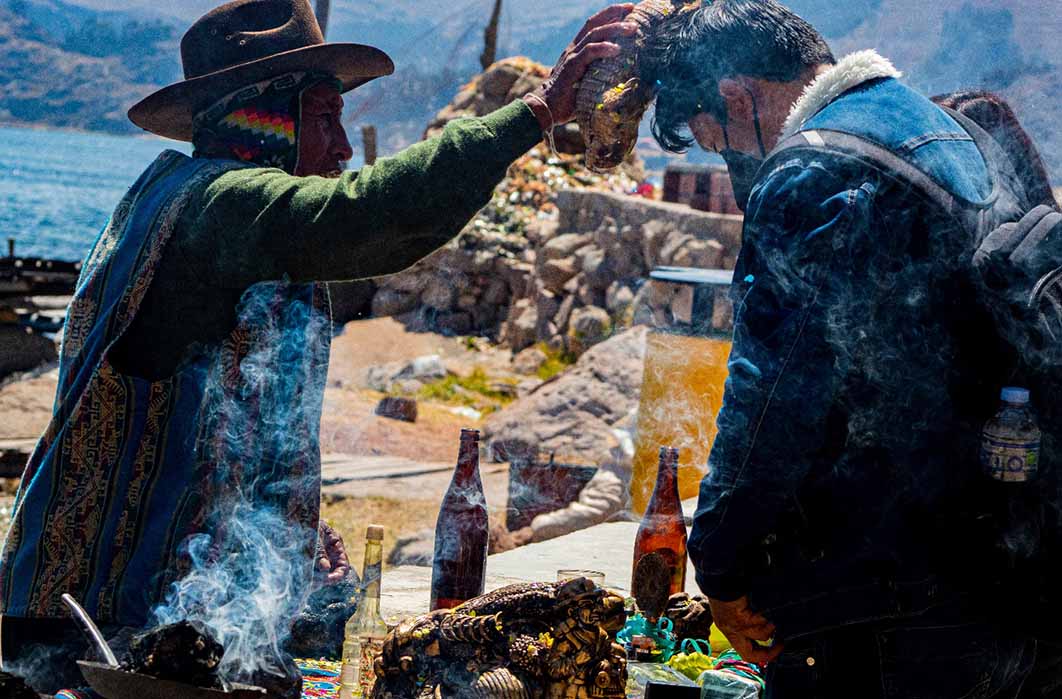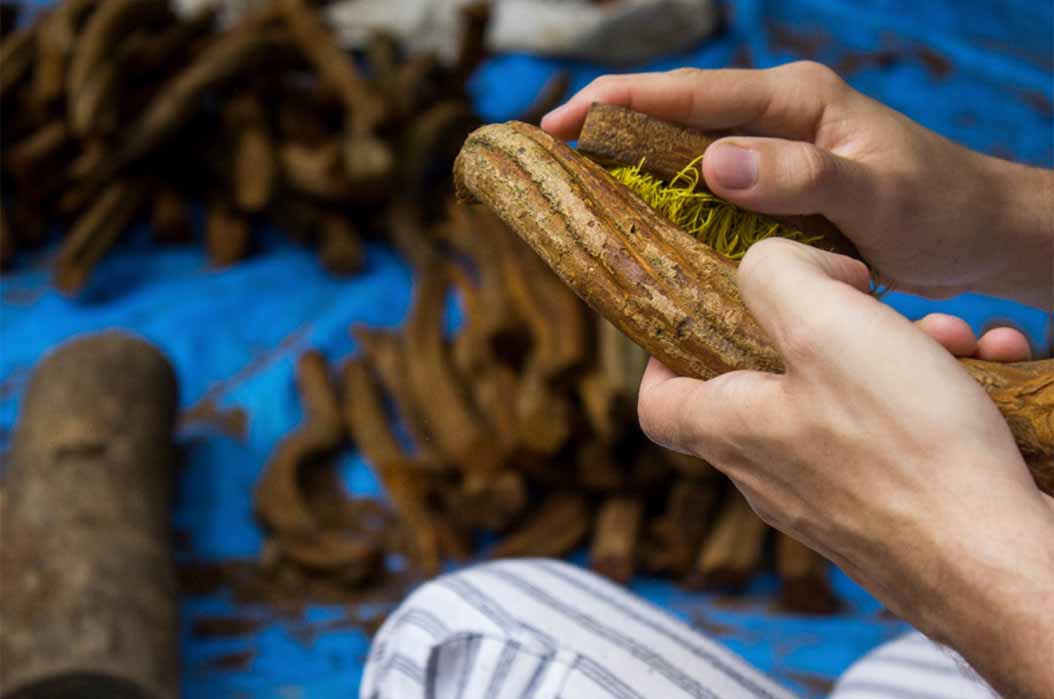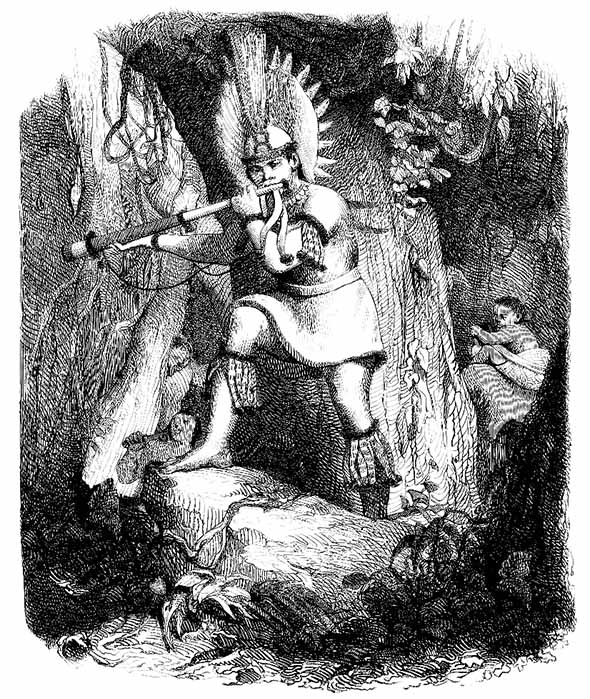
Hallucinogenic Trip Of The 1000-Year-Old Shamanic Pouch Into Another Galaxy
Since the mid-1950s, experimentalists, scientists, artists, musicians and psychonauts have been indulging in the “jungle alchemy” that is the ayahuasca, or DMT, experience. From 2008 – 2010 archaeological excavations revealed a collection of obsidian devices and a hearth from a rock shelter called Cueva del Chileno in the highlands of south-western Bolivia. The researchers found turquoise beads, colored strings, cut braids of human hair and a special “bundle” containing a pouch dating back almost a thousand years. Inside the pouch, scientists identified a mixture of at least five hallucinogenic substances, which according to an article in ‘Chemistry World’ represent “the largest number of psychotropic compounds ever found in a single ancient South American artefact”. When the archaeology news broke, the current author had limited hours to research, compile and publish an article. Now, three years later, it is time to return to this thousand-year-old magic-pouch, and to deep-dive each of the five within.

Bolivian shamanic ritual (Adobe Stock/ Fabiana)
It was Dr Melanie Miller from the University of Otago, New Zealand, and José Capriles from Pennsylvania State University who discovered the pouch and subsequently wrote a paper discussing the first chemical evidence of DMT use in ancient South American cultures. Until this discovery many pharmacological researchers believed the powerful mix of plant alkaloids, dimethyltryptamine (DMT) and harmine, was a relatively recent invention by indigenous Amazonian peoples, who call the psychotropic plant brew ‘ayahuasca.’ However, this singular discovery demonstrated that the effects of DMT have been understood for at least a millennia, but the complexity of the substance must have taken several generations, centuries, if not millennia to test, to repeatedly get wrong, and to refine.

Ayahuasca (artinlumine/ Adobe Stock)
The pair of scientists wrote that the ‘drug-pouch’ was found in a small leather bundle along with “wooden trays, a snuffing tube, llama bone spatulas, a woven headband and a string that once tied a plant bundle together – all items probably used in shamanic rituals.” Applied Liquid chromatography tandem mass spectrometry revealed the microscopic residues of DMT and harmine, as well the compounds cocaine, benzoylecgonine, bufotenine and possibly psilocin. Dr Miller observed that all five psychoactive compounds within the pouch “came from at least three different plant species, none of which grows in the Andean highlands where the bag was discovered.” This means that the man who carried the pouch either travelled long distances to gather the required plants, or that an ancient drug highway existed in Ancient South America.

Ancient Shaman smoking the pipe (Adobe Stock / Erica Guilane-Nachez)
Flying Along The Ancient South American Drug Highway
The letters D, M and T represent N, N-Dimethyltryptamine, which is a naturally-occurring, fast-acting psychoactive molecule most often referred to as the ‘Spirit molecule’ or ‘Fantasia‘. Only recently has DMT attracted serious scientific interest as a potential treatment for depression, which the World Health Organization recognizes as a leading cause of disability worldwide. In chemical terms, DMT (N,N-Dimethyltryptamine) is part of the tryptamine family which includes serotonin, a key mood-stabilizing hormone that creates feelings of well-being, happiness, and encourages sleep. However, according to Dr M Collins 2001 paper ‘Some new psychoactive substances: precursor chemicals and synthesis-driven end-products,’ “tryptamines act predominantly as hallucinogens”.




